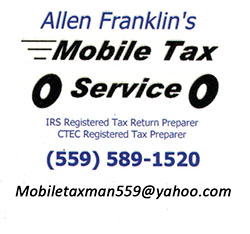Lemoore City Council welcomes sparse crowd to first public hearing on district elections
Or perhaps they were just watching it on Facebook, the first city council gathering broadcast live via streaming.
About 17 “residents” turned out for Tuesday night’s Facebook-streamed public hearing, the first of five scheduled to study and implement district-wide elections.
It turns out only 17 persons actively watched the proceedings on Facebook.
While only three or four of those in attendance had much to say about district elections, there will be ample opportunity in the future for Lemoore’s voters to comment. The next public hearing is slated for the Jan. 16 regular council meeting following by the third on Feb. 6, again during a council meeting.
A fourth and fifth could be on the same date, Feb. 4.
According to Lemoore City Manager Nathan Olson, the company the city hired to help implement district voting, National Demographics Corporation, will release draft maps of the proposed districts, hopefully by Jan. 30.
The first district elections for two councilmembers – Mayor Ray Madrigal and Jeff Chedester – will be held at the November 2018 election. Remaining councilmembers will face district voting in 2020.
A district-based election system will divide the city into separate areas, each governed by one councilmember who resides in the area. The electors within the district would vote for their councilmember.
The City must change the way council members are elected or face a lawsuit that could get expensive. At stake would be the city’s violation of the 2002 California Voting Rights Act. Legal experts contend Lemoore’s at-large system and other communities that hang on to at-large voting “dilutes the ability of Latinos (a protected class) to elect candidates of their choice or otherwise influence the outcome of the city’s elections."
Other cities have faced similar challenges and faced with mounting legal bills have voluntarily shifted to district-based elections. In most cities facing an impending lawsuit, a municipality is given 45 days to assess its situation, and then if it takes steps to move toward district voting, it has an additional 90 days to act.
Included in the transition period are five public hearings within the 90-day period, giving community members an opportunity to weigh in on the scope of the districts and sequence of elections.
“It’s a big thing for us,” said a soft-spoken Councilmember Holly Blair. “We’re going from at-large voting to district. Our goal is to make it fair and open.”
Connie Wlaschin, a frequent visitor to council meetings, said, “This is a big deal for Lemoore.”
Myeisha Neal, a Lemoore Union Elementary School board member, wondered why Lemoore shouldn’t fight to keep at-large districts. “If we’re so diverse already, can we legally fight lawsuits requiring districts.”
Lemoore’s current council is quite diverse. There are two Hispanics and an African-American currently serving as elected officials. But that hasn’t always been the case. Other communities have spent millions of dollars fighting lawsuits and lost, said Mayor Madrigal. Other cities have faced similar challenges facing mounting legal bills shifted to district-wide elections.
In a PowerPoint presentation, Olson cited the criteria and demographic information needed to implement districts. Federal requirements include creating equal populations, adhering the Federal Voting Rights Act, and prohibiting racial gerrymandering. The 2010 census will be used to help identify voting districts.
Lemoore City Hall
- Staff recommends Lemoore City Council deny family's claim in water tank incident
- City officials issue advisory following water tank explosion investigation
- Lemoore City Council 5-0 vote approves optimistic budget as revenue projections improve
- COVID-19 testing site, despite some logistical problems, is up and running in Kings County
- Kings County announces increase in COVID-19 testing on May 4 with new community site
- Hanford Adventist Health Hospital and medical professionals prepared to help should the need arise
_0.jpg)

.jpg)




